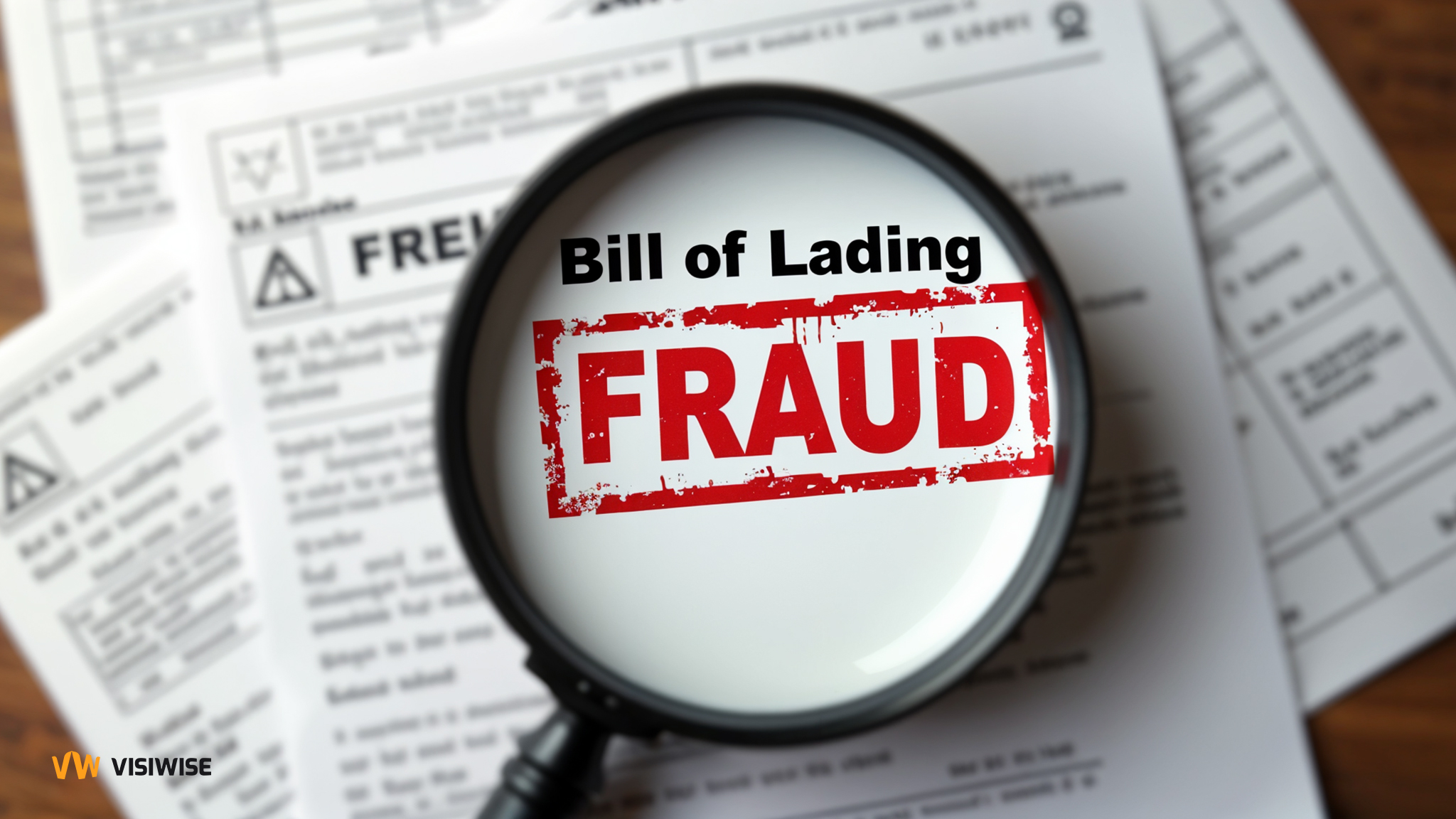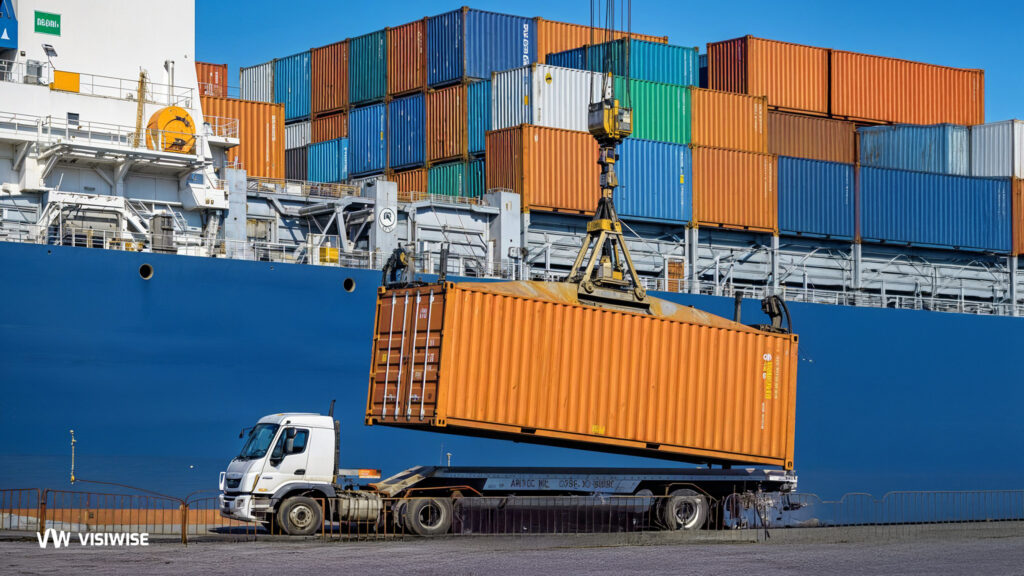The bill of lading (B/L) is a key document in international trade, functioning as a receipt for shipped goods, evidence of the contract of carriage, and a document of title. Unfortunately, its significance has also made it a target for fraud, which poses a major risk for businesses and traders worldwide. Bill of lading fraud occurs when deceitful acts are committed to manipulate the details of the document for financial gain or to misrepresent the true nature of the shipment.
Common Types of Bill of Lading Fraud
- Falsification of Shipment Details: Fraudsters may alter key details such as the description of goods, quantity, or destination to mislead involved parties. This can result in discrepancies between the shipped goods and what was expected by the buyer, potentially leading to financial losses or disputes.
- Issuance of Fraudulent Bills of Lading: Some parties may issue completely fraudulent B/Ls that do not correspond to any actual shipment. These documents are used to defraud banks, insurers, or buyers who may release funds or pay for goods that don’t exist.
- Duplicate or Multiple Originals: Multiple original B/Ls may be issued for the same shipment, allowing fraudsters to sell the same goods to multiple buyers. This can create serious legal and financial complications when disputes arise over who owns the cargo.
- Misuse of Blank B/L Forms: In some cases, blank forms that bear the carrier’s stamp and signature are stolen or misused to create fraudulent documents.
Why Shippers Request Incorrect Information on Bills of Lading
In many cases, shippers request the issuance of a bill of lading with incorrect information because they are being paid by means of a letter of credit. For payment to be released under a letter of credit, the B/L must comply with the exact terms of the credit. If it doesn’t, payment will be withheld. Both the shipper and the carrier know that the B/L will typically be used to negotiate payment, but the temptation to falsify information can arise when there is pressure to fulfill specific payment terms.
Some of the most common forms of fraudulent requests by shippers include:
- Mis-dating: Confirming loading on a date prior to or after the actual loading date. Pre-dating a bill of lading, even by a few days, is considered fraudulent.
- Incorrect Description of Cargo: Shippers often request a false description of the quality, quantity, or condition of the cargo. A typical example is labeling damaged cargo as “clean on board.”
- “Shipped on Board” When Not Shipped: Clausing a B/L with “shipped on board” before the cargo has actually been loaded is another form of fraud. In some cases, this may occur before the ship even arrives at the port.
- Under-Deck B/Ls for Breakbulk Cargo Loaded on Deck: Fraudulently indicating that breakbulk cargo was loaded under deck (or omitting the fact it was loaded on deck).
- Incorrect Port of Shipment: Indicating a false port of shipment to bypass embargoes, boycotts, or to manipulate import quotas. Shippers sometimes “switch” B/Ls at intermediate ports to hide the true origin of the cargo.
Legal and Financial Risks
Agents involved in the issuance of fraudulent B/Ls may feel protected by letters of indemnity issued by their principals or shippers. However, these indemnities are worthless since they support fraudulent acts and are unenforceable in court. If an agent knowingly misrepresents the cargo status, they share legal responsibility with the principal for inducing a third party to pay for goods that do not match the B/L.
Moreover, an agent’s principal is likely uninsured for the consequences of a fraudulent B/L issuance. The issuance of such B/Ls often strips the principal of the protection of liability limitations contained in the B/L. This puts the principal at significant financial risk.
The Club, which monitors industry practices, warned members in its newsletter "The Intermediary" about the dangers of pre-dating and fraudulent "clausing" of bills of lading. This topic was revisited in a 1996 circular. The Club has observed that fraudulent B/L issuance can result in multimillion-dollar claims, placing severe pressure on agents, but insists that an agent’s duty does not include participation in fraud.
Red Flags to Watch Out For
- Unusual or inconsistent information: Discrepancies between the B/L and other shipping documents, such as the invoice or packing list, should be treated as warning signs.
- Unverified agents or carriers: Always verify that the issuer of the B/L is legitimate by cross-checking their credentials.
- Pressure for immediate payment: Fraudsters often push for immediate payment or document clearance, hoping to bypass scrutiny.
How to Check If Your Bill of Lading Is Real
- Verify the Shipping Details: Ensure that the shipment details (description of goods, weight, volume, destination, etc.) on the B/L match other documents like the commercial invoice, packing list, and certificates of origin. Discrepancies between these documents can be a red flag.
- Cross-Check the Issuer: Verify that the shipping line, freight forwarder, or agent that issued the B/L is legitimate. You can do this by checking the company’s website, contacting them directly, or checking with relevant shipping or trade associations.
- Authentication Tools: Some shipping companies or port authorities provide online tools or platforms that allow you to verify the authenticity of a B/L using a reference or tracking number. Contacting the shipping line directly to confirm the issuance of the B/L is also a common practice.
- Verify Signatures and Stamps: Review the signatures and stamps on the B/L. Each shipping line or agent typically has unique stamps and signature styles. Inconsistencies or unusual formatting can indicate a forgery.
- Seek Professional Help: If you suspect fraud, consult with a freight forwarder, lawyer, or trade professional. They can provide deeper insights and help in cross-verifying the legitimacy of the document.
How to Check If Your Bill of Lading Is Real Online
In the digital era, many shipping companies have introduced online tools to help verify the authenticity of B/Ls. Here’s how you can do it:
- Shipping Company Websites: Many large carriers provide tracking or verification systems on their official websites. You can input the bill of lading number into these systems to check the status of the shipment and confirm that the B/L was legitimately issued by the carrier.
- Blockchain-Based Solutions: Some shipping companies and platforms have started using blockchain technology to secure and authenticate B/Ls. These platforms allow users to verify that the B/L has not been tampered with and is genuine.
- Third-Party B/L Verification Platforms: Several platforms and portals, such as the Electronic Bills of Lading (eB/L) services, provide real-time verification of B/Ls. These platforms work in collaboration with shipping lines and banks to provide a secure environment for document authentication.
- Port Authority Websites: Some port authorities offer verification services for B/Ls related to cargo passing through their ports. By inputting the B/L number into their system, you can check whether the cargo associated with that B/L has indeed entered or left the port.
Conclusion
Bill of lading fraud is a significant risk in international trade, but with the right precautions and tools, businesses can minimize their exposure. Diligently checking the authenticity of a B/L, whether through physical inspection or online verification, is crucial for maintaining trust and avoiding costly mistakes. Always remain vigilant and seek professional help if you suspect any issues.



